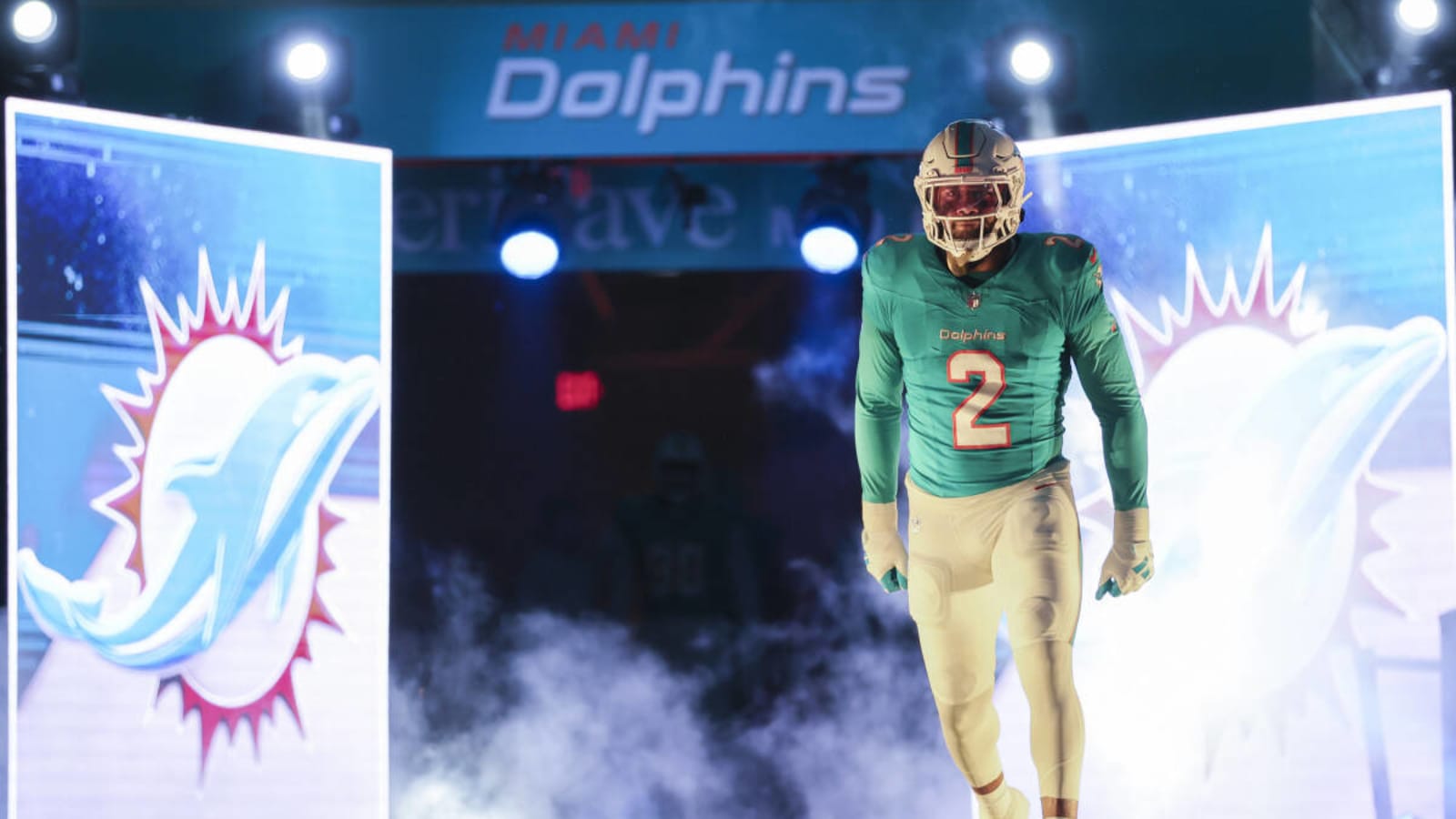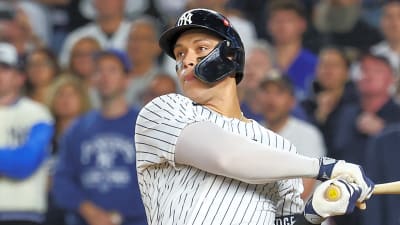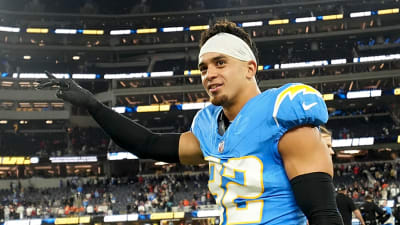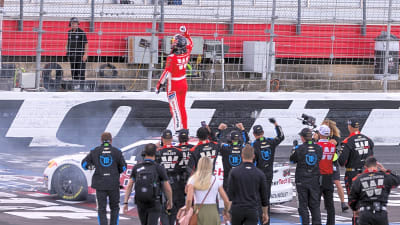
The Miami Dolphins are sitting at 1-4 with no end to their defensive woes in sight. Miami could potentially shuffle around some personnel — but there's no super hero walking through the door to salvage Miami's shortcomings against the run. This team must dance with the group they brought to the ball, for better or for worse.
The backdrop of this conversation, of course, is the long-term outlook of the franchise if the losses keep piling up. It will be time for a full-on rebuild around whatever deemed cornerstones are staked out as a part of the roster for 2026 and beyond. Should we get there, Miami has a very important month ahead of them.
Wins could stave off the talk of a rebuild and the calls for jobs. Losses? Well, it makes Miami's outlook for November's trade deadline a major subplot to the end of this season. And if we're focused on the trade deadline, it's worth speculating on who could be on the move for Miami. A good place to start is the team's log-jam on the edge — most notably with Bradley Chubb.
What kind of trade value does Bradley Chubb present at the trade deadline for the Dolphins?

Chubb has enjoyed a return to action this season after missing all of 2024 due to a late 2023 knee injury. His status as a starter has been unchallenged and his workload has been sizable — Chubb has logged 217 defensive snaps thus far through five games and he's posted a sack in four of the team's first five games this season. His most recent was an unblocked challenge of Panthers quarterback Bryce Young off the edge, which saw Young flat out drop the ball and Chubb recover.
Some will look at the sack production and perhaps have their eyes light up in hopes of upgrading another team's pass rush unit. After all, Chubb's four sacks rank him tied for ninth in the NFL through five weeks with names like Myles Garrett and Danielle Hunter.
Pressures tell a different story, however. He's logged just 10 pressures on 103 pass rush opportunities. He ranks outside the top-100 in the NFL in pressure rate amongst edge defenders. He deserves credit for his finishes. But the disruption rate is less than half of what Miami is getting from their other starting edge, Jaelan Phillips.
So what is that worth on the trade market? After all, a reset for the Dolphins puts Chubb on the roster going into 2026 as a 30-year old pass rusher on a second contract — those timelines don't necessarily line up.
Any potential trade value is predicated in part by Chubb's contract. Surely the sack numbers, the pedigree, Chubb's leadership, and the potential upside sell for him continuing to knock off rush will generate some interest if the Dolphins do end up as sellers.
It's the base salary that does Miami more favors than all of that. The Dolphins re-worked Chubb's contract this offseason and facilitated a pay cut to keep him on the roster. When that happened, he received a majority of his compensation in the form of a signing bonus to help create cap space. Chubb's remaining base salary is the veteran minimum, $1.255 million dollars. Whatever prorated amount is left upon the time of a hypothetical trade will be what a hypothetical new team will be responsible for. That means that a new team could in theory be bringing Chubb in this season for as little as $600,000 in base salary. Neat! Except that's not all there is when you look under the hood.
This is complicated by the incentives written back into Chubb's contract from the reworked deal Miami took with him in the spring. If Chubb plays 60% of eligible snaps this season, he receives a $1.225 million incentive bonus. At 65%, 70%, and 75%, Chubb would receive an additional $900,000 at each threshold. Chubb, for the record, is currently taking approximately 67% of Miami's snaps.
Bradley Chubb's 2025 performance incentives, according to Spotrac
- Play Time Incentives
60%: $1,225,000
65%: $900,000 additional
70%: $900,000 additional
75%: $900,000 additional - Sacks Incentive
6: $1,225,000
8: $900,000 additional
11: $900,000 additional
13: $900,000 additional - $129,411 per-game active bonus in 2025 ($2.2 million maximum)
The same bonus structure exists for Chubb in the form of sack production. A $1.225 million incentive kicks in upon reaching six sacks this season. Chubb already has four. He would achieve an additional $900,000 upon reaching eight sacks, then again at 11 and again at 13. And, finally, Chubb receives a bonus for every game he dresses with the team of $129,411 — a maximum value of $2.2 million in per-game active bonuses as well.
This hinders his trade value to some degree. The incentive dollars change the math of an attractively low base salary and saddle a potential trade discussion with extra weight around performance incentive wiggle room. Granted, Miami could pay out their per-game bonuses played and cut that figure close to half if they wanted to. But what about the play time and sack incentives? Would they be split by team? Would they be transferred in full?
The Dolphins would likely be facing the outlook of sending out a potential $5-7 million dollar player for Chubb's services and then any team acquiring him would almost certainly waive him after the season as a one-year rental after the last of his guaranteed money on his contract expires. Chubb is owed $20.2M and $23.2M in non-guaranteed salary over the next two seasons in 2026 and 2027 — which no team is going to pay out voluntarily.
The best Miami could hope for on this front as a result? Probably a pick swap. Perhaps a Day 3 draft choice would come to Miami if the sides can agree on how to sort the division of the incentive dollars. But at the cost of the potential cash savings and getting a jump on the "bad medicine" of 2026's salary cap as this team continues to strip aged contracts, that might be worth it, particularly in the event that it opens the door for the team's first-round draft choice in 2024, Chop Robinson, to see the field more often than he has thus far.
window.addEventListener('message', function (event) {if (event.data.totalpoll && event.data.totalpoll.action === 'resizeHeight') {document.querySelector('#totalpoll-iframe-426').height = event.data.totalpoll.value;}}, false);document.querySelector('#totalpoll-iframe-426').contentWindow.postMessage({totalpoll: {action: 'requestHeight'}}, '*');
More must-reads:
- Lions appear 'destined' to make huge Aidan Hutchinson move
- Browns' latest trade raises more questions about GM Andrew Berry's decision-making
- The 'Most NFL QB two-rushing-TD games' quiz
Breaking News
Trending News
Customize Your Newsletter
 +
+
Get the latest news and rumors, customized to your favorite sports and teams. Emailed daily. Always free!








